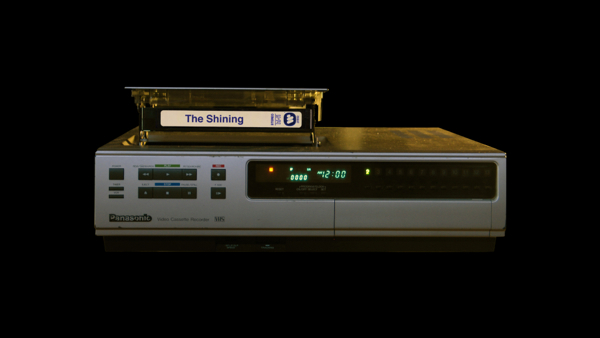Movie review by Greg Carlson
Following a small avalanche of conspiracy theories that explore, among other things, Native American genocide, the bureaucracy of the Holocaust, the myth of the Minotaur, and a faked Apollo 11 moon landing, one of the interview subjects in the delightful “Room 237” addresses what is perhaps documentarian Rodney Ascher’s central question – why Stanley Kubrick would deliberately make “The Shining” so complicated – with the reply, “Why did Joyce write Finnegan’s Wake? It’s a way of opening doors from a hermetically sealed reality into possibilities. It’s also a way of trapping someone like me.”
Few directors have sustained the level of cult-like devotion inspired by Kubrick, and the most engrossing subject of Ascher’s film is not the plausibility or veracity of the “hidden in plain sight” clues attributed to the notoriously meticulous auteur, but rather the way in which film spectatorship can make room to empower both viewer and artist via the imaginary conduit that links fan and superstar genius. These connections are even more common in the wake of Twitter feeds, like buttons, and blogs – as evidenced by the rabbit-hole exegeses of Kevin “Mstrmnd” McLeod, a Kubrick disciple who reportedly declined the invitation to be interviewed for “Room 237.”
Ascher’s movie opens with a lengthy and detailed disclaimer that disavows any endorsement by the Kubrick 1981 Trust, Kubrick’s family, Warner Bros. Entertainment, “The Shining Filmmakers,” and Kubrick himself (despite the fact that Kubrick has been dead since 1999). This sets the stage for both the film’s farfetched claims and the rather stunning extent to which nearly the entire enterprise is stitched together out of clips from “The Shining” and many of Kubrick’s other films, as well as titles as unexpected as “The Thief of Baghdad,” “All the President’s Men,” “Spellbound,” and “Apocalypto.” In one piece of visual editorializing, Ascher includes a clip of Stephen King as the doomed yokel Jordy Verrill in “Creepshow.”
The King versus Kubrick subplot manifests in the alteration of Jack Torrance’s Volkswagen Type 1 from the red of King’s novel to the yellow of Kubrick’s film. The seemingly minor change is complicated by the movie’s inclusion of a wrecked red Beetle seen post-collision with a semitrailer, an image that suggests to many viewers a symbolic announcement that Kubrick intends to make the movie version of “The Shining” his own. Ideas like this one, along with arcane deliberations on purposeful continuity errors ranging from disappearing chairs to reversing carpet patterns, are shared via Ascher’s nine-chapter organization.
Ascher’s decision to not show any of his five primary interview subjects focuses attention on the clips taken from “The Shining.” The images are so detailed, so abundant, and so often re-contextualized, one marvels at the extent to which Ascher tests the limits of the doctrine of fair use. During the festival run of “Room 237,” a number of writers addressed the possibility that copyright claims and legal headaches might prevent the film’s wider distribution, a story parallel to recent discussion surrounding Randy Moore’s “Escape from Tomorrow,” shot at Walt Disney World and Disneyland without permission.
Every Kubrick devotee should have no problem settling on a favorite theory from the range of hypotheses shared in “Room 237.” One of the most appealing segments looks at maps and floor plans suggesting that Kubrick designed an Overlook Hotel schematic that places windows where they couldn’t possibly open to the outdoors. This element of “Shining” scholarship has been thoroughly documented, and Rob Ager’s online videos on spatial disorientation are an excellent companion to “Room 237.”
Another wildly creative expression of textual potency lives in the “Dark Side of the Rainbow” style synchronicities that emerge from screening “The Shining” simultaneously forward and backward with both video channels superimposed, a rather absurd notion that yields some hallucinatory jolts. These, and so many other improbable points of view, argue that “The Shining” ranks high on the list of sources that have inspired some serious pop culture apophenia, and if you haven’t sampled the goods, make a reservation to visit “Room 237.”
